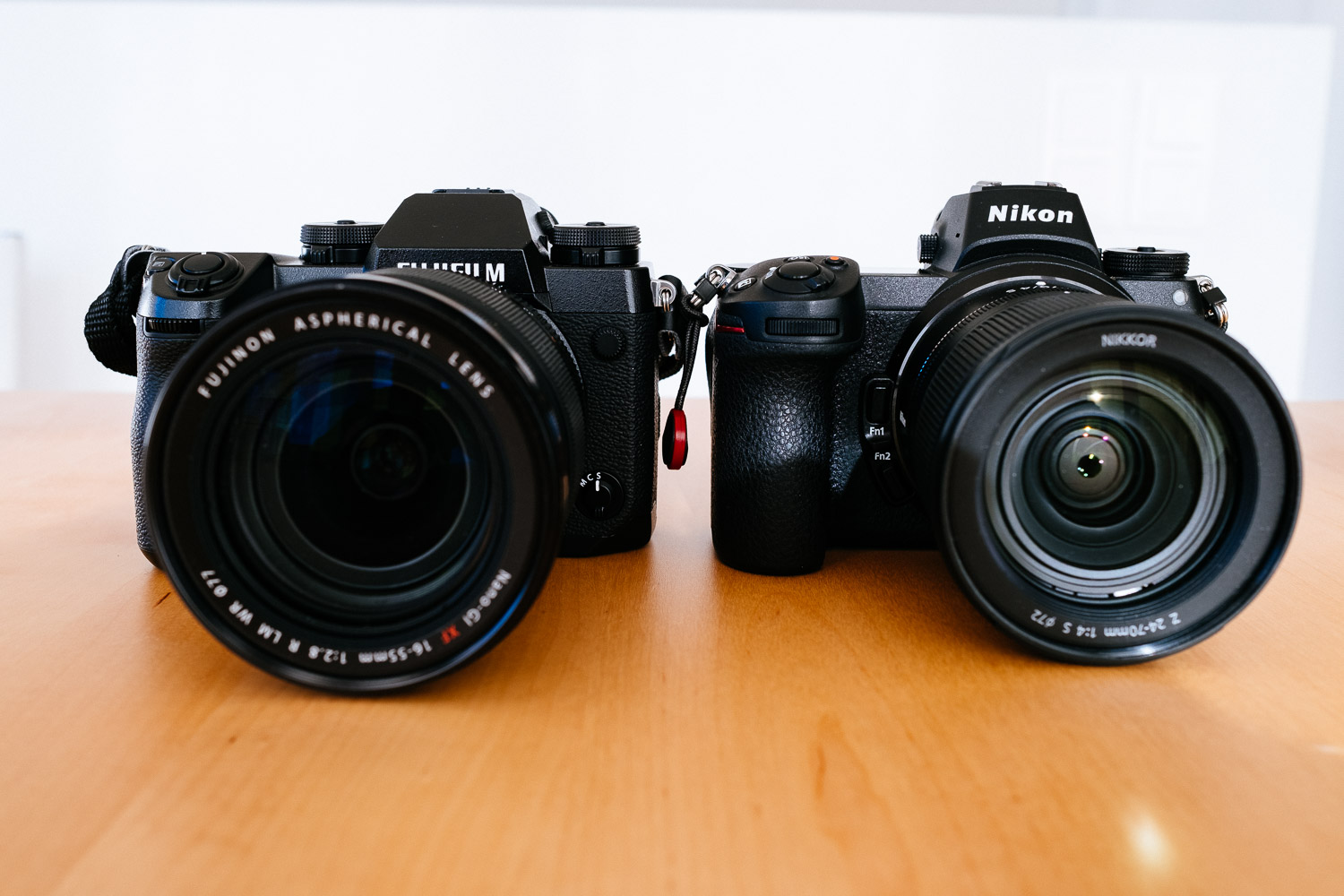 FUJIFILM X-Pro2 (23mm, f/5.6, 1/75 sec, ISO200)
FUJIFILM X-Pro2 (23mm, f/5.6, 1/75 sec, ISO200)
In photography size matters. The size of the imaging sensor but also the size of the camera and the size of the lenses. So let’s compare the Nikon Z6 with my Fujis.
As you can clearly see the camera with the smaller sensor is significantly bigger. There was a time when full frame was big and heavy.
On the left is my Fuji X-H1 plus the amazing XF 16-55/2.8 WR and on the left is the Nikon Z6 plus the Nikkor Z 24-70/4 S. The Fuji lens is one stop faster but the sensor in the Nikon is double the size so regarding subject isolation they are about the same. Neither lens has IS but both bodies have IBIS (in body image stabilisation). The faster lens on the Fuji lets you shoot on lower ISO settings compared to the lens of the Nikon but the Nikon Z6 has better high ISO performance because of its bigger sensor.
In theory a faster lens plus a smaller sensor will perform more of less the same as a slower lens on a bigger sensor. And telling from my first test shots with the Nikon Z6 it is just like that in real life too.
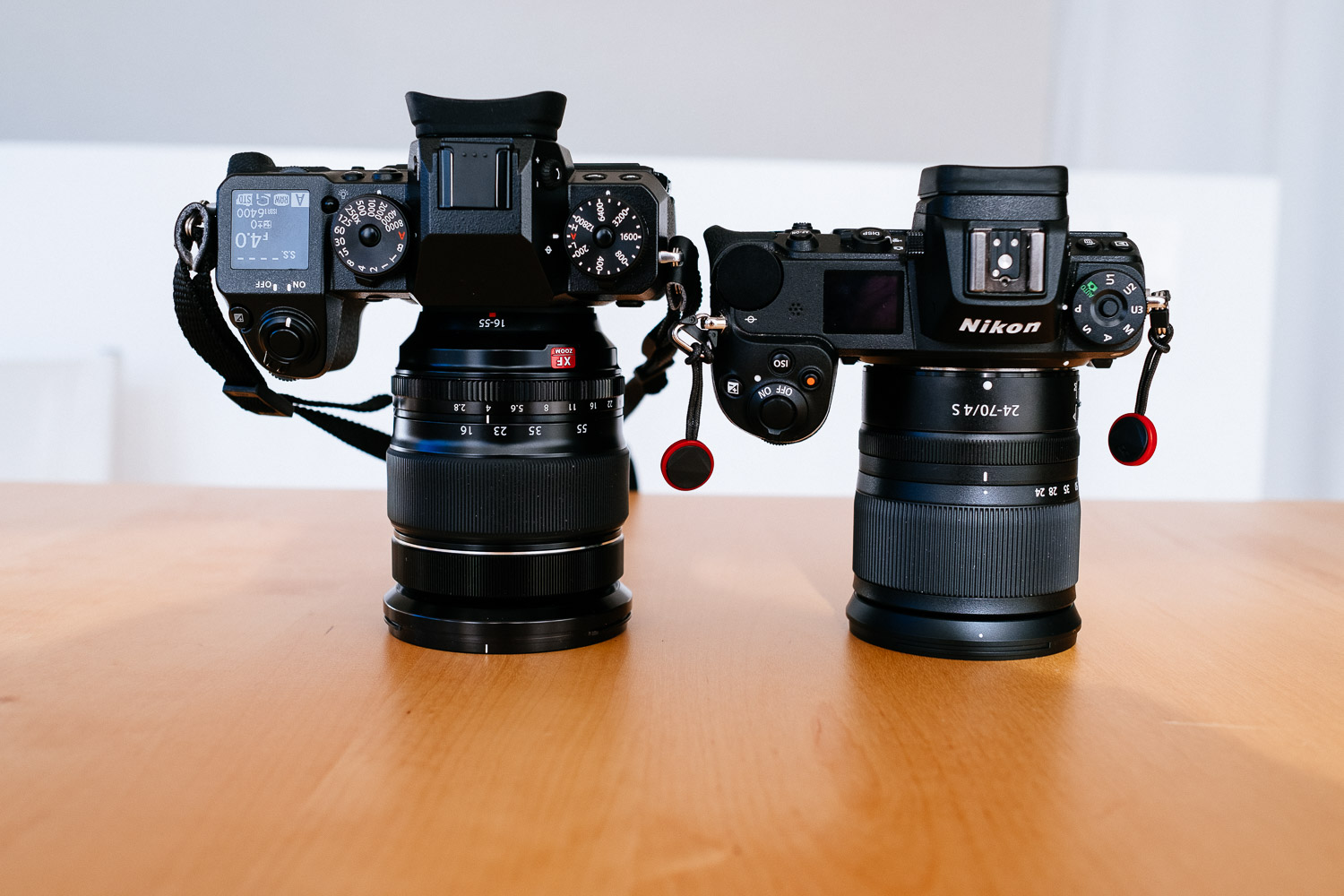 FUJIFILM X-Pro2 (23mm, f/4, 1/250 sec, ISO200)
FUJIFILM X-Pro2 (23mm, f/4, 1/250 sec, ISO200)
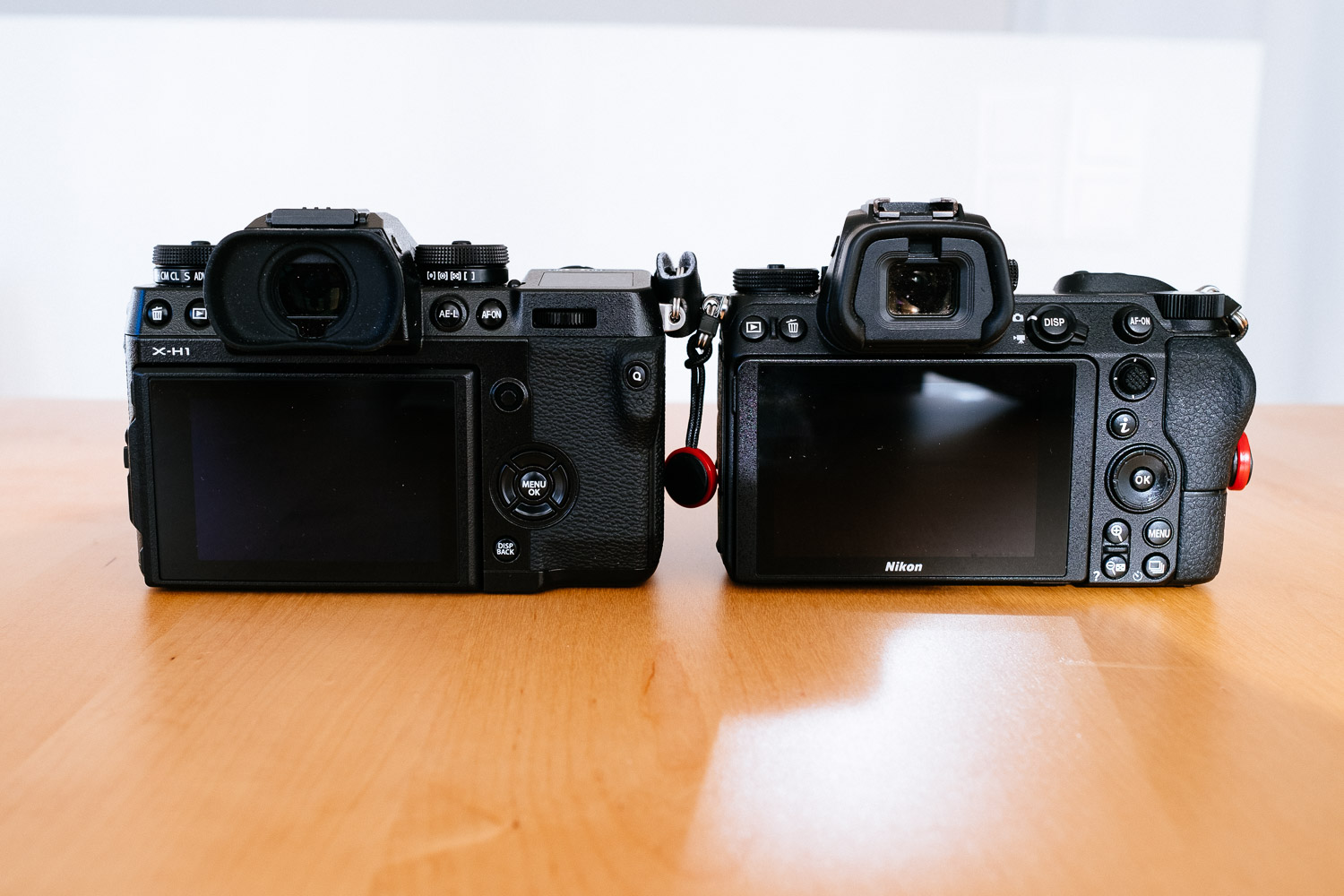 FUJIFILM X-Pro2 (23mm, f/5.6, 1/100 sec, ISO200)
FUJIFILM X-Pro2 (23mm, f/5.6, 1/100 sec, ISO200)
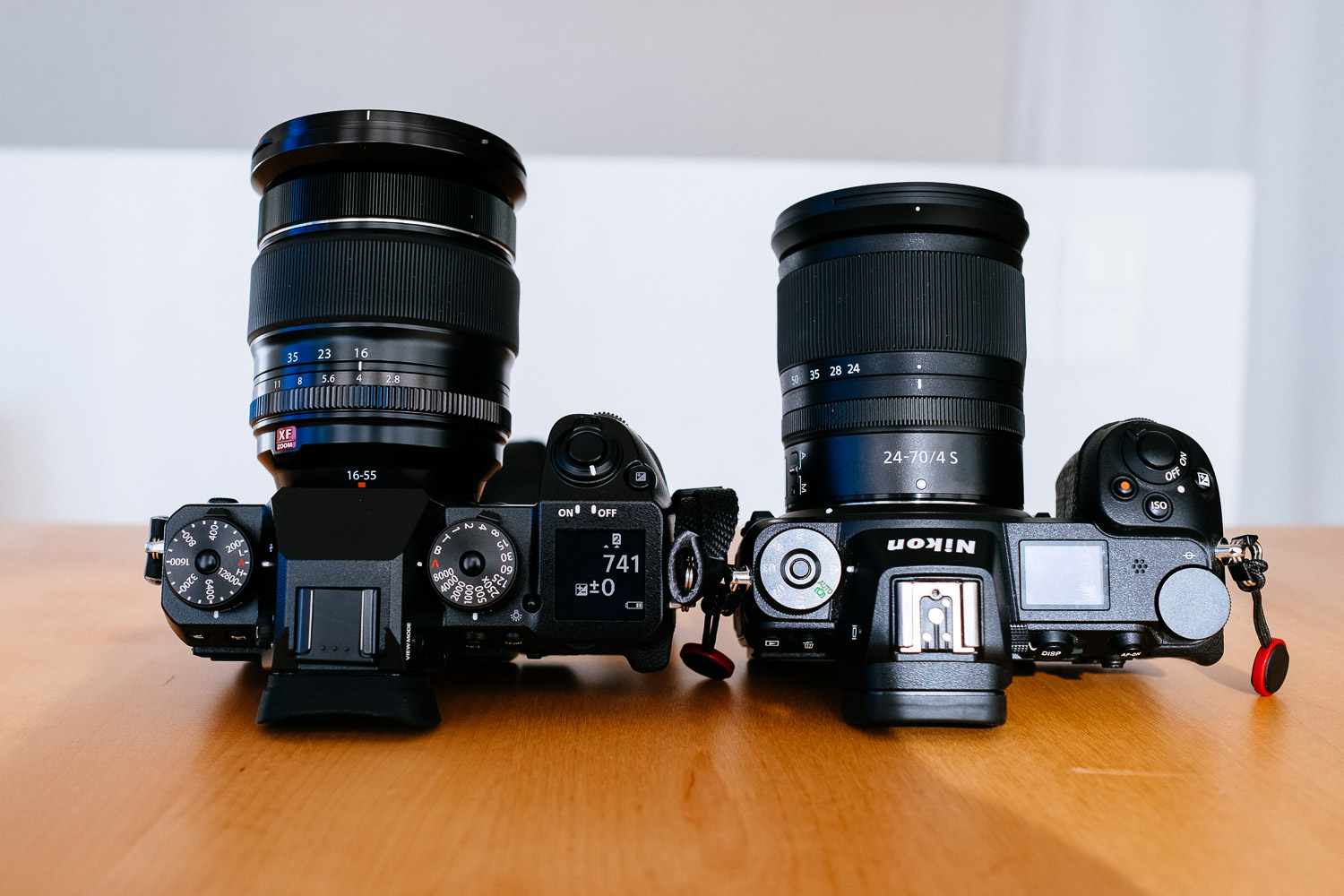 FUJIFILM X-Pro2 (23mm, f/4, 1/300 sec, ISO200)
FUJIFILM X-Pro2 (23mm, f/4, 1/300 sec, ISO200)
My Fuji is not only bigger but also heavier than the Nikon. So why shoot the Fuji? That’s a good question. On paper the Nikon looks more attractive. I think the Fuji XF 16.55/2.8 WR is still the better lens especially on the wide end and it has better sunstars if that’s your thing but the Nikkor is a great performer too and it is sharper on the long end. At the end the results are very close. Of course that is on the 24MP sensor. On the 45MP sensor of the Z7 it would be a different story.
If you plan to use only the Fuji X-H1 and the 16-55 I honestly think the Nikon combo would make a lot of sense too. Even if you would add a super wide angle zoom there would be no weight penalty for going full frame. But the Fuji X-H1 is Fujis heaviest camera body by far and the XF 16-55/2.8 WR is also rather massive for APS-C.
Before I finally gave in and bought the 16-55 I complained lengthly about its size and weight. Even though I love the results I think that Fuji should make a high quality XF 16-70/4 WR. No need for OIS, most new cameras will have IBIS, but make it as compact as possible. The 16-55 is simple too big and heavy for APS-C and puts Fuji in a difficult spot today as high quality full frame camera bodies and f4 zooms are available from Canon and Nikon.
But my main camera is the Fuji X-Pro2 and my favorite lenses are the XF 14/2.8 R, the XF 23/2 WR and the XF 35/1.4 R. And than the picture is completely different as you can see below. The Fuji X-Pro2 plus one of the primes is an elegant, small and light camera. For me this is the real beauty of the Fuji X system. A lightweight body plus small and light primes. The Fuji X plus the small prime lenses were a true game changer for my photography. After seeing the results of the 24MP sensor of the Fuji X-Pro2 I sold my Canon 6D and Sony A7R plus the f2.8 zooms from Canon and never looked back.
In order to get my favourite prime lens setup from Nikon Z I would need to get the 20/1.8, the 35/1.8 and the 50/1.8. That way I would have the same lenses with an even better subject isolation and better performance in low light. Of course such a setup would be much bigger and much heavier. And even though I could see the potential benefits I’m just not willing to trade the compactness and the shooting experience of my Fuji X-Pro2 for it.
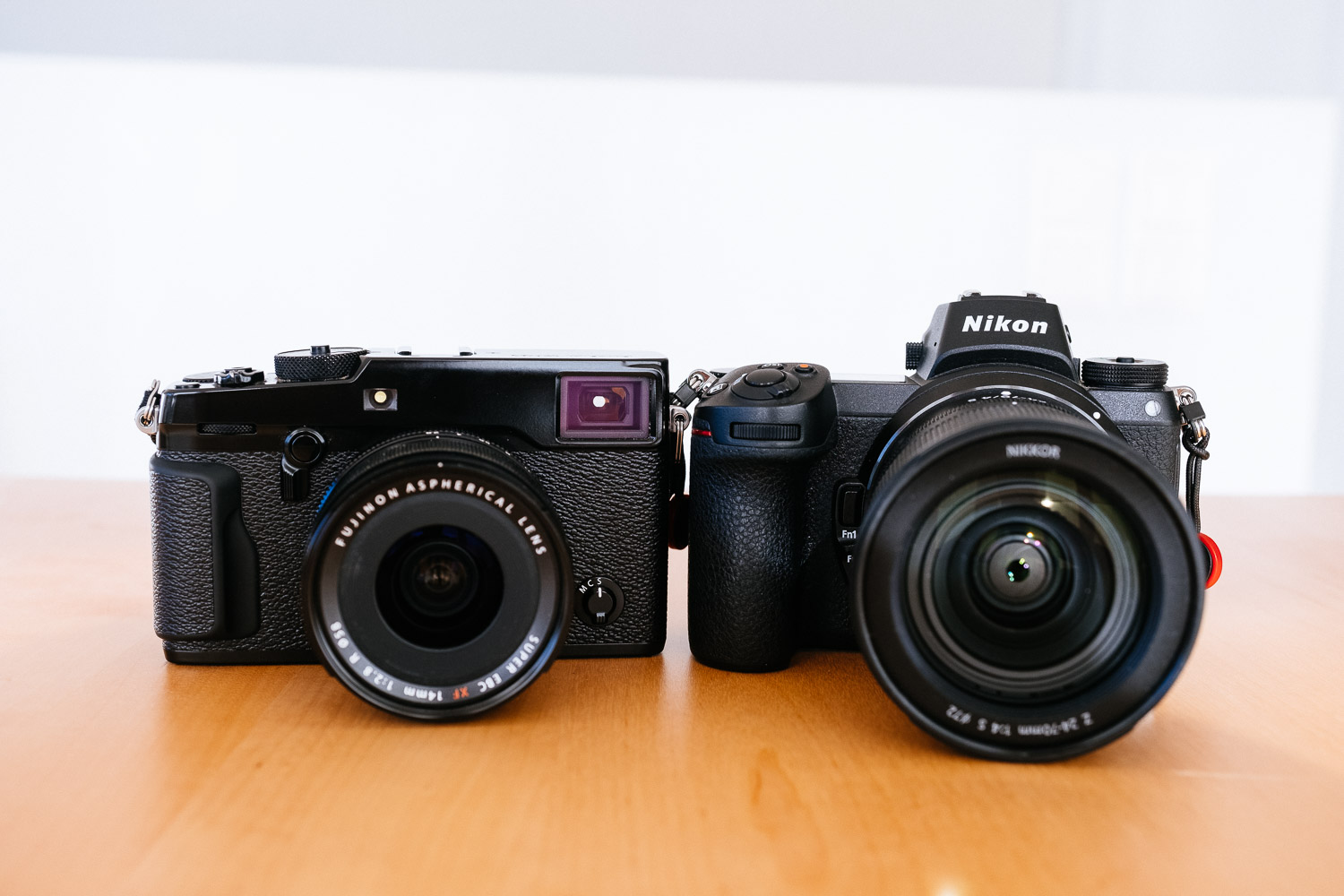 FUJIFILM X-H1 (27.4mm, f/4, 1/200 sec, ISO500)
FUJIFILM X-H1 (27.4mm, f/4, 1/200 sec, ISO500)
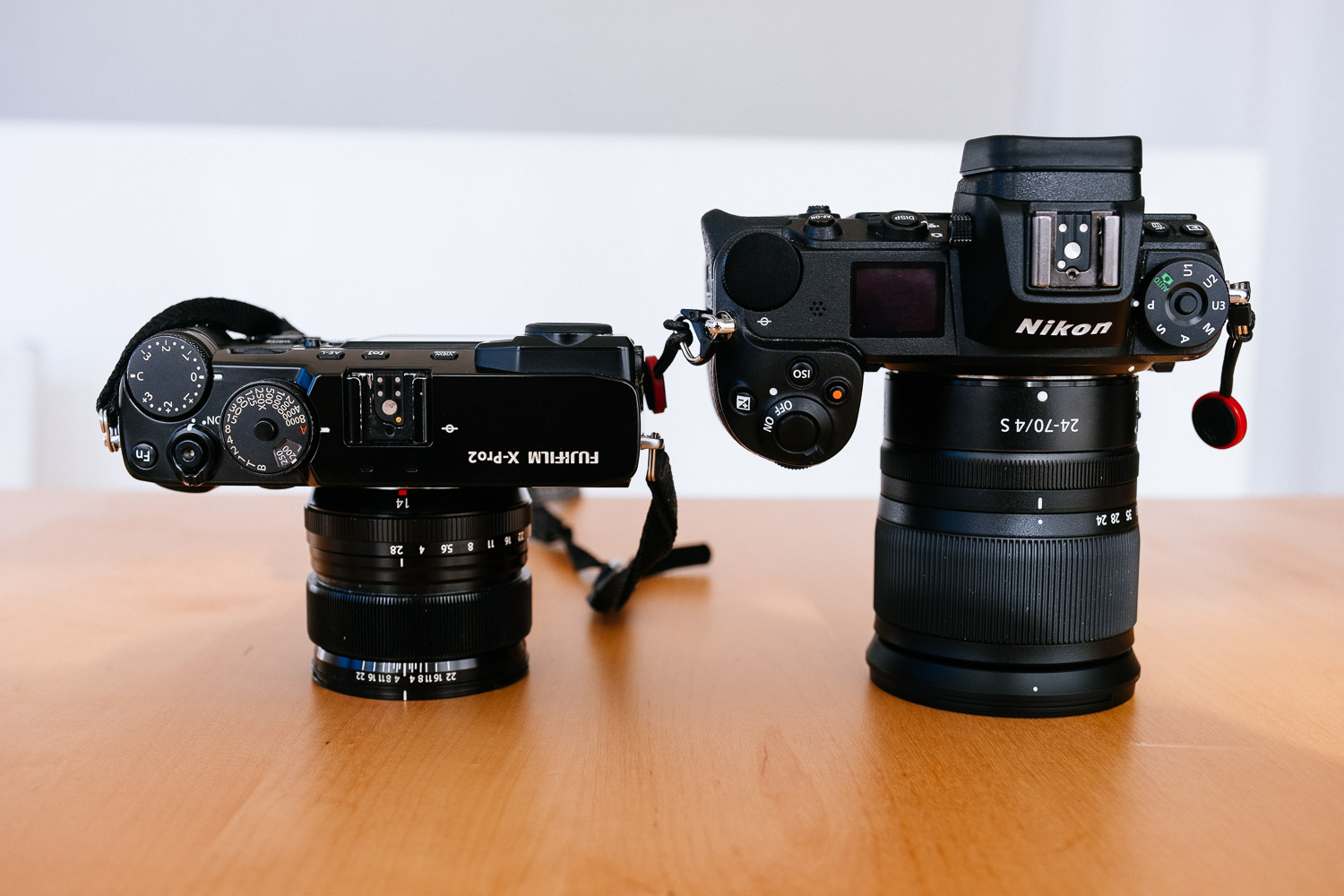 FUJIFILM X-H1 (24.9mm, f/4, 1/200 sec, ISO250)
FUJIFILM X-H1 (24.9mm, f/4, 1/200 sec, ISO250)
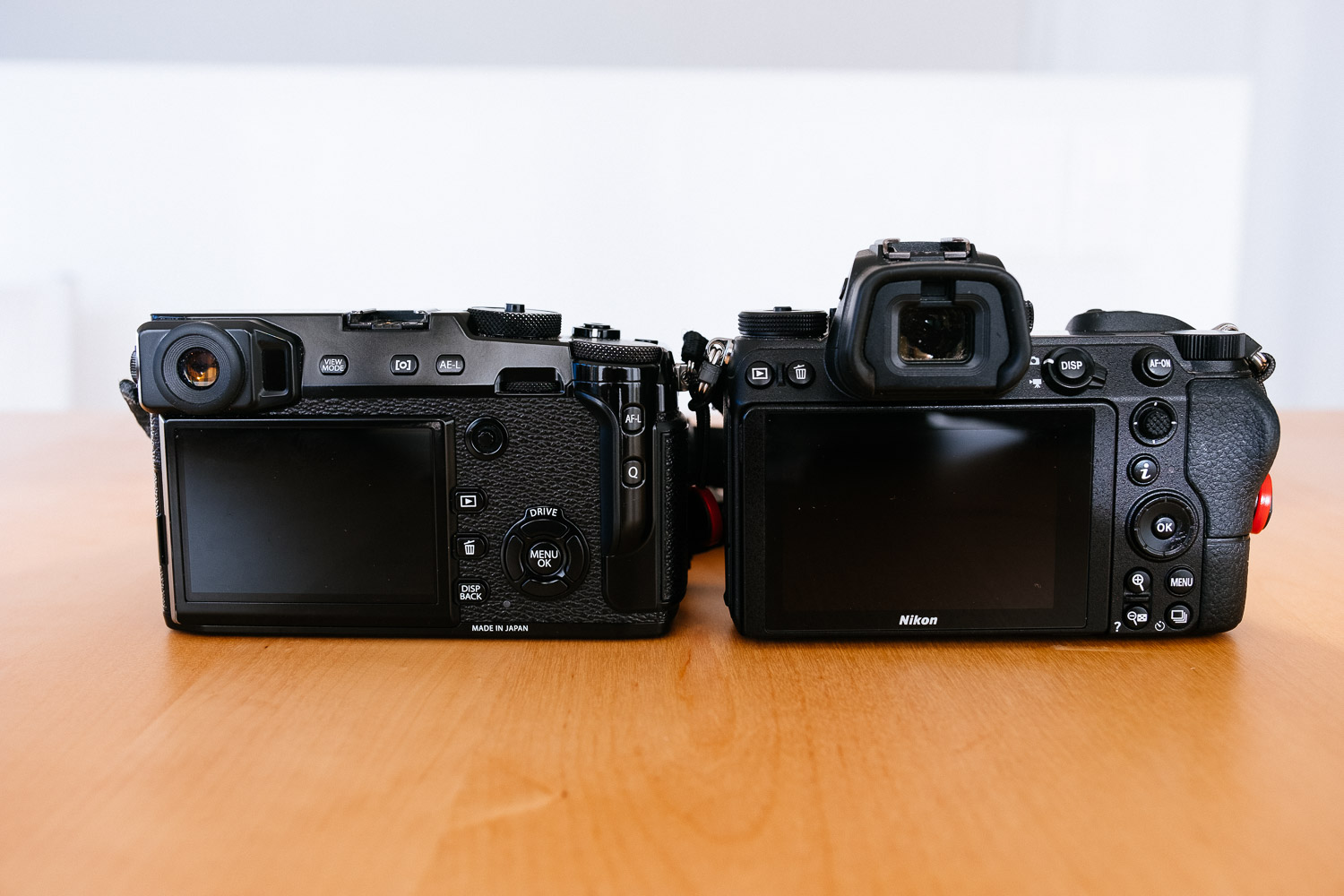 FUJIFILM X-H1 (22.7mm, f/4, 1/200 sec, ISO320)
FUJIFILM X-H1 (22.7mm, f/4, 1/200 sec, ISO320)
I would rather get the Z7 plus the 14-30/4 and the 24-70/4 for my landscape photography when I’m on vacation in the USA to replace the Fuji X-H1 plus 16-55/2.8 and 10-24/4.
I would love to have those massive high resolution files again even though I don’t really need them. But I’m an amateur photographer so unlike a professional photographer my decisions have nothing to do with business or reason. If amateurs like me would only buy what they need the photo industry would have been died a long time ago. We are the ones that keep this industry alive despite the constantly improving cameras in smartphones.
The Nikon Z9 looks like an amazing camera and I’m sure there will be a smaller version with similar features somewhere in the near future. A compact high resolution, high speed camera with excellent AF and no viewfinder lag or blackout because there is no shutter. One camera that does it all. Perfect!
One more request to camera makers: Since you already removed the mirror and now the shutter please use the available space to throw in a mobile phone module so that I can send a photo without the need to transfer the picture to my iPhone first. If Apple manages to put a phone in their watches camera makers should have no problem to put one in their cameras.

